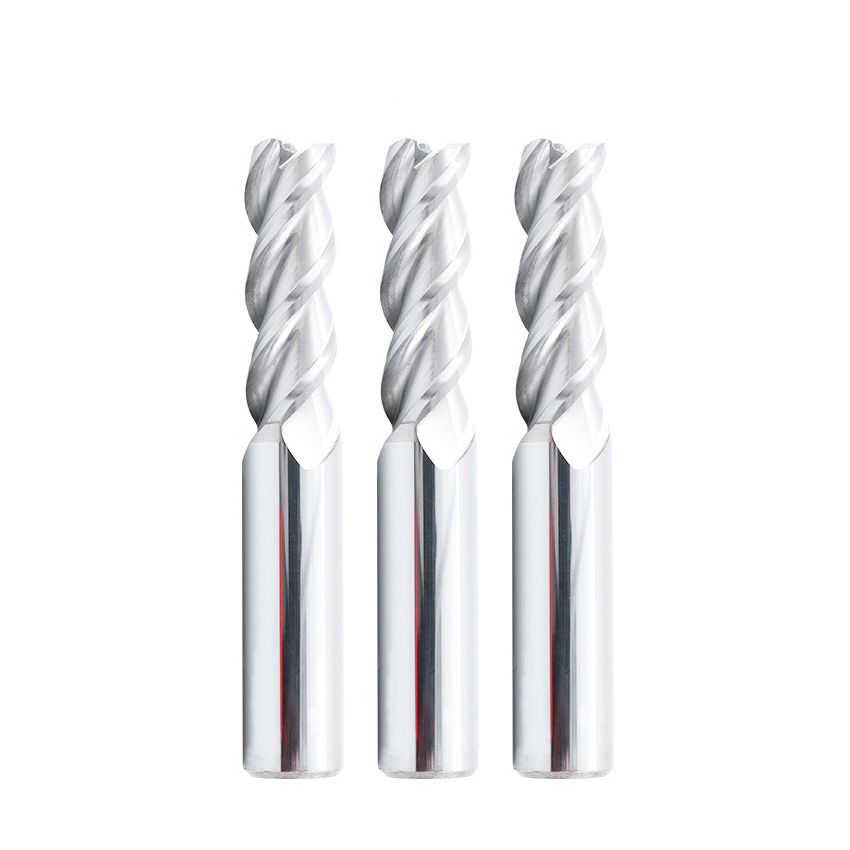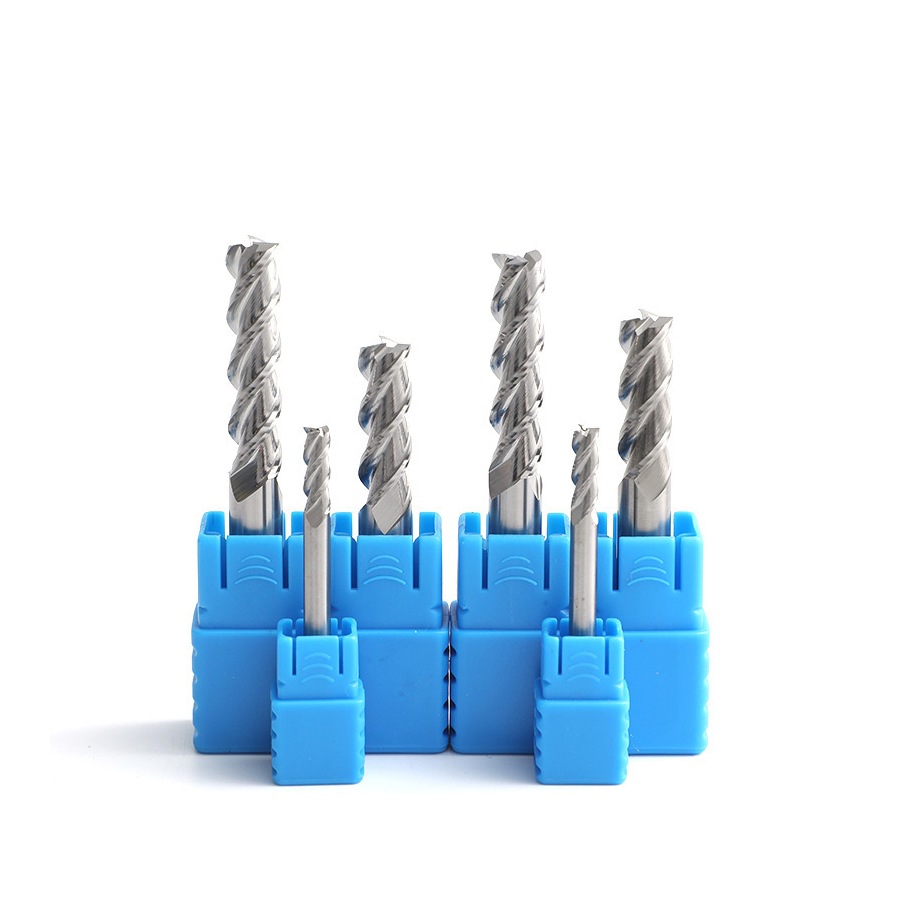There are two ways relative to the feed direction of the workpiece and the direction of rotation of the milling cutter: the first is forward milling. The direction of rotation of the milling cutter is the same as the feed direction of the cutting. At the beginning of cutting, the milling cutter bites the workpiece and cuts off the final chips.
The second is reverse milling. The direction of rotation of the milling cutter is opposite to the feed direction of the cutting. The milling cutter must slip on the workpiece for a period of time before starting the cutting, starting with the cutting thickness of zero, and reaching the maximum cutting thickness at the end of the cutting.
In three-sided edge milling cutters, some end mills, or face mills, the cutting force has different directions.When face milling, the milling cutter is just on the outside of the workpiece, and special attention should be paid to the direction of the cutting force.When milling forward, the cutting force presses the workpiece against the workbench, and when milling reverse, the cutting force causes the workpiece to leave the workbench.


Since Shun milling has the best cutting effect, shun milling is usually preferred. Only when the machine has a thread gap problem or there is a problem that shun milling cannot solve, reverse milling is considered.
Under ideal conditions, the diameter of the milling cutter should be larger than the width of the workpiece, and the axis line of the milling cutter should always be slightly away from the center line of the workpiece.When the tool is placed facing the cutting center, burrs can easily occur.When the cutting edge enters the cutting and exits the cutting, the direction of the radial cutting force will continue to change, the spindle of the machine tool may vibrate and be damaged, the blade may shatter and the machining surface will be very rough, the milling cutter is slightly off-center, the direction of the cutting force will no longer fluctuate-the milling cutter will obtain a preload.We can compare center milling to driving in the center of the road.
Every time the milling cutter blade enters the cutting, the cutting edge must withstand the impact load. The size of the load depends on the cross-section of the chip, the workpiece material and the cutting type.When cutting in and out, whether the cutting edge and the workpiece can bite correctly is an important direction.
When the axis line of the milling cutter is completely outside the width of the workpiece, the impact force when cutting is borne by the outermost tip of the blade, which will mean that the initial impact load is borne by the most sensitive part of the tool.The milling cutter finally leaves the workpiece with the tip of the cutter, which means that from the beginning of the blade to the departure, the cutting force has been acting on the outermost tip until the impact force is unloaded.When the centerline of the milling cutter is exactly on the edge line of the workpiece, the blade is detached from the cutting when the chip thickness reaches the maximum, and the impact load reaches the maximum when cutting in and out.When the axis line of the milling cutter is within the width of the workpiece, the initial impact load when cutting in is borne along the cutting edge by the part farther away from the most sensitive tip, and the blade exits the cutting relatively smoothly when retreating.
For each blade, the way the cutting edge leaves the workpiece when it is about to exit the cutting is important.The remaining material when approaching the retreat may reduce the blade gap somewhat.When the chips are detached from the workpiece, an instantaneous tensile force will be generated along the front knife surface of the blade and burrs will often occur on the workpiece.This tensile force endangers the safety of the chip blade in dangerous situations.
Post time: Nov-11-2022







